
Mountain Streams --Vol.9--
The Spinning Fly

Does the stable posture of the fly on the intricate flow attract the fish?
Why do no fish come up to the upside down fly? Why do no fish respond well to the extremely high floating fly on the water surface? Thirdly, if we do not tie the wings well, the fly will sometimes spin around during casting. Then the leader will be twisted and the power to reverse it will make the dry fly spin around on the water surface. As for flies under the water, both the wet fly and the streamer spin around as they are swimming. Fish do not respond well to those spinning flies, either. What part of the fly on the earth do fish watch? Do all three examples, in which fish do not respond well, have something to do with the shape of the fly?
There is another fact to think of. Once the upside down fly recovers its normal posture, fish jump at it. Once the well buoyant fly--- so much that it rolls on the water surface--- becomes barely floating, fish respond well. Once the twisted fly ---so twisted that it spins around ---is let alone or drifted not so as to spin around, it can catch fish. Those three cases are also well known among anglers today.
Well, then, fish respond vividly to what appears to them in the same way as their daily bait. We have never seen the upside down mayflies or sedges drifting. Neither, have fish, probably. It is unlikely that fish have seen the spinning bait, either. Furthermore, there must be scarce bait slipping on the surface like a dandelion seed.
If that unnatural presentation of the fly prevents fish from responding well, we will surely get great results by drifting, floating and swimming the fly as naturally as possible.

The Takahara River in March. Snow was whirling. Fish made frequent rise to the dry fly because the water temperature was high.
The Upward Fly
I want to tie a simple and beautiful fly. I want to tie such an attractive fly that fish jump at it like mad. I want to tie such a good hooking fly that we can hook surely with it if only fish touch it. I was always thinking so while I tied any genre of flies. Although it seemed to me that fish preferred an imitation fly of various parts of insects or small fish as their bait to a pinch of busy wool, I tied my first flies by imitating model flies I happened to have. I was convinced that a large amount of hackles and a pinch of tail fibre were necessary to float the fly.When I could watch my flies drifting beautifully on the water surface, I was satisfied with both tying the fly well and designing it appropriately. But sometimes fish came up and went away from the halfway point or I ended in setting the hook to no fish although I had confidence of hooking up the fish. I utterly confused, wondering what made them do so. I doubted that this fly floated perfectly but lacked power to attract fish. Or I doubted that this fly floated so well that fish came up to it but had a bad shape for hooking up the fish. Once I have such questions I do not feel well until I get perfect answers, so I intended to examine the fly again from fish eye. I know we never understand fish's capricious feeling but now I pondered, as if I had known fish's feeling.

Most of the terrestrials are barely floating on the water surface.
My first guess was that the bad shaped fly was the main cause of bad response and scarce coming up. All fly fishermen are possessed by that idea in their early days, so I hope all my readers understand me. Well, I must confess that I began to remodel all my flies, one after another, although remodelling meant just remaking them close to real bait.
Thus I planned to reduce the amount of the tail and hackles by less than half because real insects do not have such large amount of tail or legs. My new fly had the good shape that looked perfectly to please fish. I set out for fishing in high spirit to try my new flies. Alas, I got a miserable result. I was far from thinking if it was a good fly or not. To be honest, my new flies could not float. If only they float and drift, I will definitely manage to catch fish, so I believed. I cast the fly again and again, feeling as if I were saying a prayer but in vain. My flies never floated.
I tried to drop the fly on the flow underfoot after I completely drained water off it. It managed to float with its hackles spread on the water, whereas its body and tail sank into the water. It was a strange scene as if a broken umbrella had been floating. Before long the whole fly sank into the water. I realized that unnatural shape of the dry fly had a very good reason to be so in the long history of fly tying.

The Takahara River at the beginning of the opening season. A large number of small duns just hatched are drifting on the surface.
To give good posture to the tube fly
25 years have passed since my miserable story of remodelling the fly. Now we are in the turning of the century. When I fished salmon or cherry salmon with the tube fly, I became concerned with its posture. Since the tube fly was not floating on the surface, the problem was not how to float it but in what posture it was swimming in the water. As I mentioned in my book "Sophisticated Flies", if we use a large single hook, it will go down on the slow current, that means the body will do down. Then there will be a space between the body and the wings. It is far from an ideal fly. Fish do not respond well to it. To solve that problem fundamentally, Richard Waddington devised the prototype of Waddington shank we use today. At the same period the tube fly rapidly spread, too. The treble hook that was set to both Waddington shank and the tube was very small for the whole fly size. At least the proportion of the treble hook in the whole fly was smaller than that of the single hook.Treble hook made a great improvement in the fly posture and anglers got greater results than in the time of single hook. But now it has become quite common. Then we are longing for further improvement in good posture of the fly. In 1999, when I completed ST1 treble hook, which was lighter, finer and sharper than old products, many anglers in Japan and Europe welcomed it. As most of tube flies use a plastic tube, light ST1 was utterly suitable to set to a light plastic tube. Not a few anglers told me that the fly did not turn upwards any more and that they could get a big catch.

The char is washed and polished by melting snow. It has a good appetite even in the low water temperature.
However, in 2000, when I completed ST2 treble hook for big fish over 22 pounds, the problem came back to the starting point. ST2 is so strong that it is hardly transformed even after it repeatedly caught over 22 pound salmon. As a matter of course, ST2 is heavier than ST1. Examining both hooks set to the same pattern, I found ST1 fly clearly kept better posture without the tail going down. However, the strength of hook is an indispensable condition for the anglers who aim at catching a trophy size salmon of his lifetime. How should I solve that problem?

Heavy hook spoils the proportion of the fly.

Firstly, watching the fly from the side, we should place the tube body in the middle of the whole fly so that the wings might not separate from the body even when the body goes down due to heavy hook. We should not tie all wings on the upper side of the tube but tie half of them on the lower side. Squid flies like Rosemary are ideal in this point because wings are tied around the whole tube equally.
Secondly, we should have as short body as possible. The shorter the body is, the less down the hook goes. That method is particularly effective to the pattern with jungle cock near the head. The fly will get better results in hooking.
Thirdly, we should use a short copper tube. The copper tube is heavy enough not to be influenced by the weight of the hook, so it enables the fly to keep good posture.
Fourthly, we should combine a short copper tube and a plastic tube to make a hybrid tube. Then the hook will not go down any more and we can have a longer body. Only we will take pains to insert the copper tube into the plastic one.
-- To be continued --
- NET SHOP INFORMATION
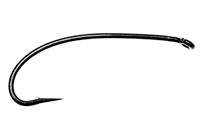
SL6 Black Spey Hooks
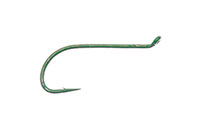
DU3 Limerick Spinner Hooks
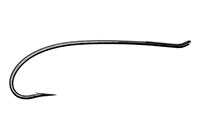
SL4 Single Bartleet Hooks
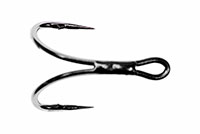
XD1 Tube Fly Double Hooks
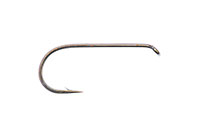
DD2 Flat Perfect Hooks
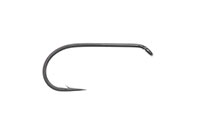
DD1 Black Terrestrial Hooks
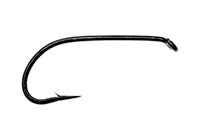
TD4 Old Limerick Wet Hooks
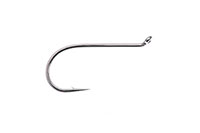
DU1 Silver May Hooks
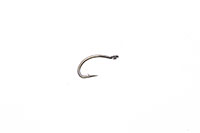
MU1 Flat Midge Hooks
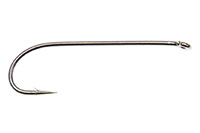
LD3 Long Limerick Hooks
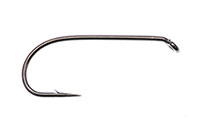
TD2 Summer Sproat Hooks
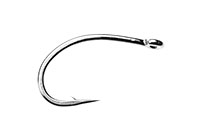
XS1 Tube Single Silver Hooks
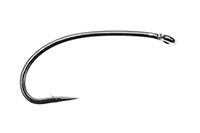
TD6 Siver Sedge Hooks

SL5 Black Spey Hooks

DU3 Limerick Spinner Hooks
- TROPHY CLUB
- FLY SHOW
- EXHIBITION
- MASTERS`
- FLY DRESSING CONTEST Archives
- TRAVELLER Archives
- TACKLE IMPRESSIONS Archives
- ANGLERS` PHOTO GALLERY Archives
- ----------------------------------------------
- トロフィークラブ
- フライショー
- エキシビション
- マスターズ
- フライドレッシング・コンテスト・アーカイヴ
- トラヴェラー・アーカイヴ
- タックル・インプレッション・アーカイヴ
- アングラーズ・フォトギャラリー・アーカイヴ
株式会社サワダ 185-0021 東京都国分寺市南町3-13-4
SAWADA'S INC. 3-13-4 Minamicho, Kokubunji, Tokyo 185-0021, Japan
写真・ドキュメントの無断転載を禁じます。
All the images and documents found on this site are owned by Ken Sawada and may not be used without permission.
But, link to this site is FREE.
Copyright © 2000 - 2025 SAWADA'S INC.. All rights reserved.
SAWADA'S INC. 3-13-4 Minamicho, Kokubunji, Tokyo 185-0021, Japan
写真・ドキュメントの無断転載を禁じます。
All the images and documents found on this site are owned by Ken Sawada and may not be used without permission.
But, link to this site is FREE.
Copyright © 2000 - 2025 SAWADA'S INC.. All rights reserved.
